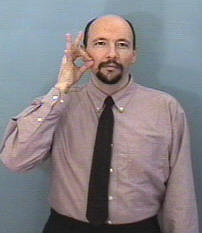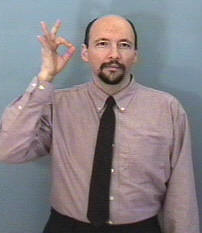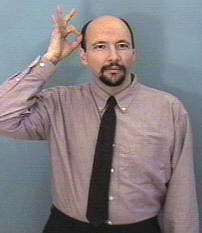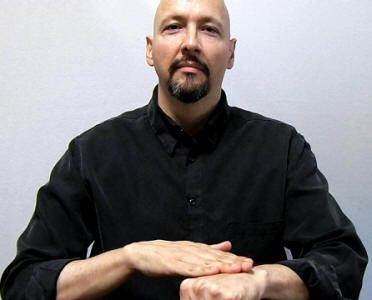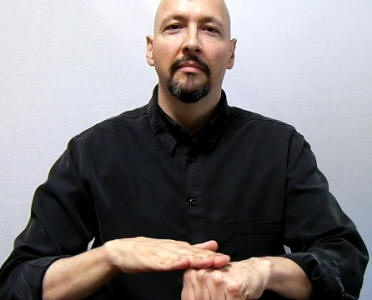American Sign Language: Native-American ("Indian")
Native-American: (Traditional Version)
Touch an "F" hand to your cheek, then touch your head higher up and back. Memory aid: Visualize the ceremonial headdress sometimes worn by some Native Americans.
In a message dated 3/15/2007 9:25:13 P.M. Pacific Daylight Time, Allie writes:Dr. Bill,
I thought the sign for Native American changed to NATURE + AMERICA + AGENT to be politically correct.
Do you know if this is true?
-AllieAllie,
I personally don't plan on using the "NATURE + AMERICAN + AGENT" method. For the time being I still do the old "feather headdress" version.
The incoming "PC" method I've seen is to rub the back of the non-dominant hand twice. That is a sign that has been borrowed from "Indian (Native American) Sign Language." As early as 2006 I met someone who said she saw that way being taught as a variation at Cal State University, Northridge. Plus I looked in an old book of "Indian Sign Language" and noted that the "rub" method was being show by a Native American as the sign for "Indian" -- thus I do see the "rub" version as having some strong roots.
--Bill
NATIVE-AMERICAN-indigenous version / Native American Sign Language (NOT ASL)
Use a double movement (see notes).not similar to the ASL sign for SURFACE, rather the movement was closer to the ASL sign "PET" but with a reversed movement - making two forward strokes (not circular movements as in the sign SURFACE).
Notes: While conversing in my office with a transfer student (Deaf and a skilled ASL user), I noticed that she did the sign "SURFACE" when referring to "Native Americans" or the group that were formerly referred to as "American Indians." I asked where she got that sign and she indicated that she learned it from a faculty member at California State University, Northridge (which doesn't necessarily mean that the sign is being taught as ASL at that university -- it simply means that one person showed it to another person and it is being used in some conversations between some people). The reason why I'm including it here is because I became curious about the sign and I went to an old "Indian Sign Language" dictionary and looked up their sign for "Indian." The original movement of sign for Native American in the "Indian Sign Language" dictionary was
However, it appears that some second language users of the new (or restored) "NATIVE AMERICAN" sign have mutated the sign by using a circular movement of the dominant hand. I will be watching to see if others adopt either of these versions to replace the existing ASL sign. The sign is likely to meet with some resistance due to looking too much like the existing ASL signs for "SURFACE" and "PET."
It is reasonable to state that this "rub" version is a sign "some" Native Americans use or have used to describe themselves via at least one version of "Indian Sign Language" and at least one published source mentions that this sign is associated with the color of the skin of Native Americans.
Want to help support
ASL University? It's easy:
DONATE (Thanks!)
(You don't need a PayPal account. Just look for the credit card
logos and click continue.)
Another way to help is to buy something from the ASLU "Bookstore."
Want even more ASL resources? Visit the "ASL Training Center!" (Subscription
Extension of ASLU)
CHECK IT OUT >
Bandwidth slow? Check out "ASLUniversity.com" (a
free mirror of
Lifeprint.com less traffic, fast access)
VISIT >
You can learn sign language online at American
Sign Language
(ASL) University (tm)
Sign language lessons and resources. Dr. William Vicars (c) Lifeprint.com
